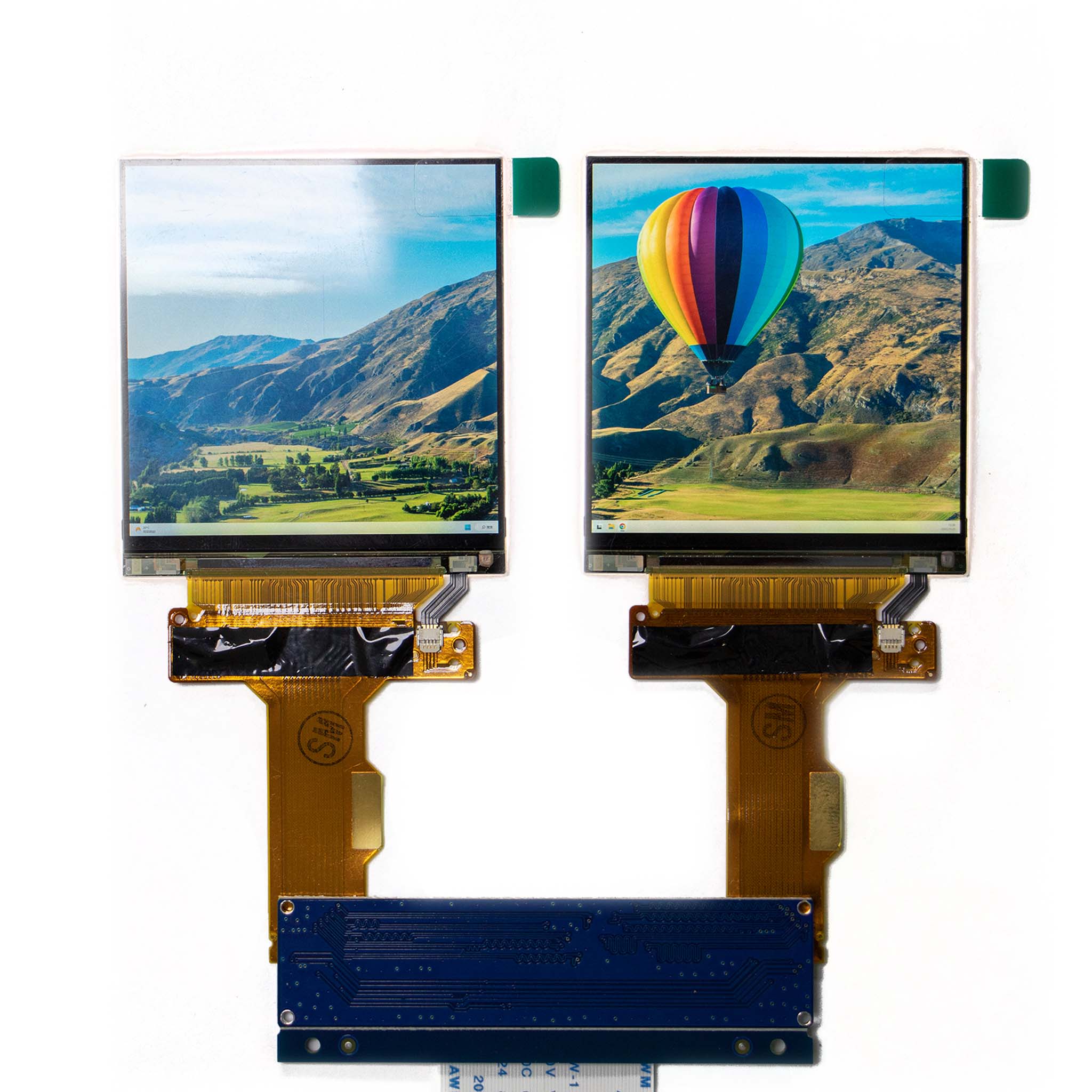OLED technology is a type of organic light-emitting diode technology that works by applying an electric field to cause organic light-emitting materials to emit light between electrodes. An OLED display screen is composed of many such light-emitting diodes (OLEDs), each of which can independently emit light. This enables OLED displays to achieve high contrast, high saturation, and faster response times.
Compared to traditional liquid crystal displays (LCDs), OLED displays do not require a backlight source, making them thinner, lighter, more flexible, and more energy-efficient. Additionally, OLED displays have wider viewing angles, higher brightness, and lower power consumption.
Silicon-based OLED microdisplays are active organic light-emitting diode display devices that are made by combining CMOS technology and OLED technology, with single-crystal silicon as the active drive backplane. The structure of the silicon-based OLED device includes a drive backplane and an OLED device. The silicon chip adopts mature integrated circuit CMOS technology to form the pixel circuit, row and column drive circuits, and other functional circuits required for the silicon-based OLED microdisplay. Combining OLED's fast response, large viewing angle, and low power consumption with CMOS technology, not only achieves an active addressing matrix of display screen pixels, but also realizes various functional driving control circuits such as SRAM memory and T-CON, reducing the external connections of the device, increasing its reliability, and achieving lightweight, with pixel size one-tenth of traditional display devices and high precision.
In simple terms, CMOS actually implements various circuit logic such as OR, AND, and NOT gates in a super small area, while the purpose of using CMOS in silicon-based OLED is to control the super small light-emitting body through these sophisticated circuits.
In simple terms, silicon-based OLED actually integrates the light-emitting device on a single-crystal silicon integrated circuit chip with video signal processing and pixel driving arrays, and the role of CMOS is to manufacture logic circuits on the single-crystal silicon.
Silicon-based OLED is a branch of AMOLED, which has the following four advantages from a production and manufacturing perspective:
- The substrate chip adopts mature integrated circuit technology, and the manufacturing yield is much higher than LTPS technology.
- Using single-crystal silicon, with high mobility, stable performance, and long lifespan.
- An OLED vapor deposition and encapsulation equipment of 200mm x 200mm can meet the manufacturing requirements, unlike AMOLED, which requires high-generation production lines.
- The silicon-based OLED microdisplay is small in size, and the near-eye display effect it provides can be comparable to AMOLED displays.
Pixel density is a critical parameter for AR displays, and silicon-based OLEDs can achieve a density of 3000-4000 PPI, far surpassing what LCDs can achieve. Additionally, silicon-based OLEDs exhibit the high contrast, saturation, and fast response time characteristic of traditional OLEDs. Therefore, they are highly suitable for near-eye displays and represent an important direction for the future development of microdisplays.
Read more

Fast-LCD thrives in VR for its 90-120Hz refresh rates, ≤1ms response cutting motion blur, and zero burn-in risk vs OLED. Cost-effective, it pairs well with Pancake optics (e.g., Meta Quest 2), bala...

VR devices can provide an unprecedentedly realistic visual experience, but they also demand higher comfort requirements. This is because the VR headset covers the entire visual range of the human e...



Leave a comment
This site is protected by hCaptcha and the hCaptcha Privacy Policy and Terms of Service apply.